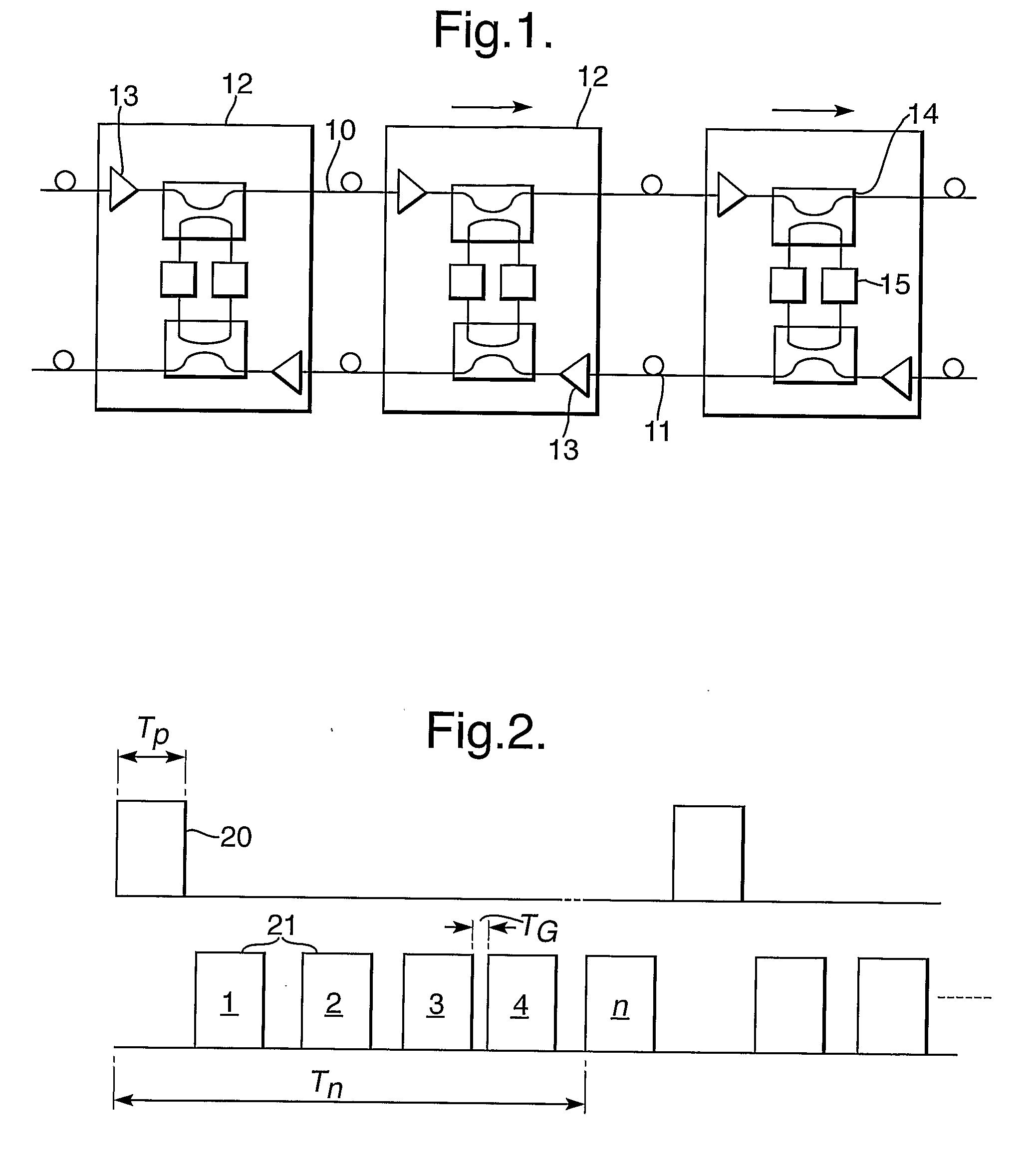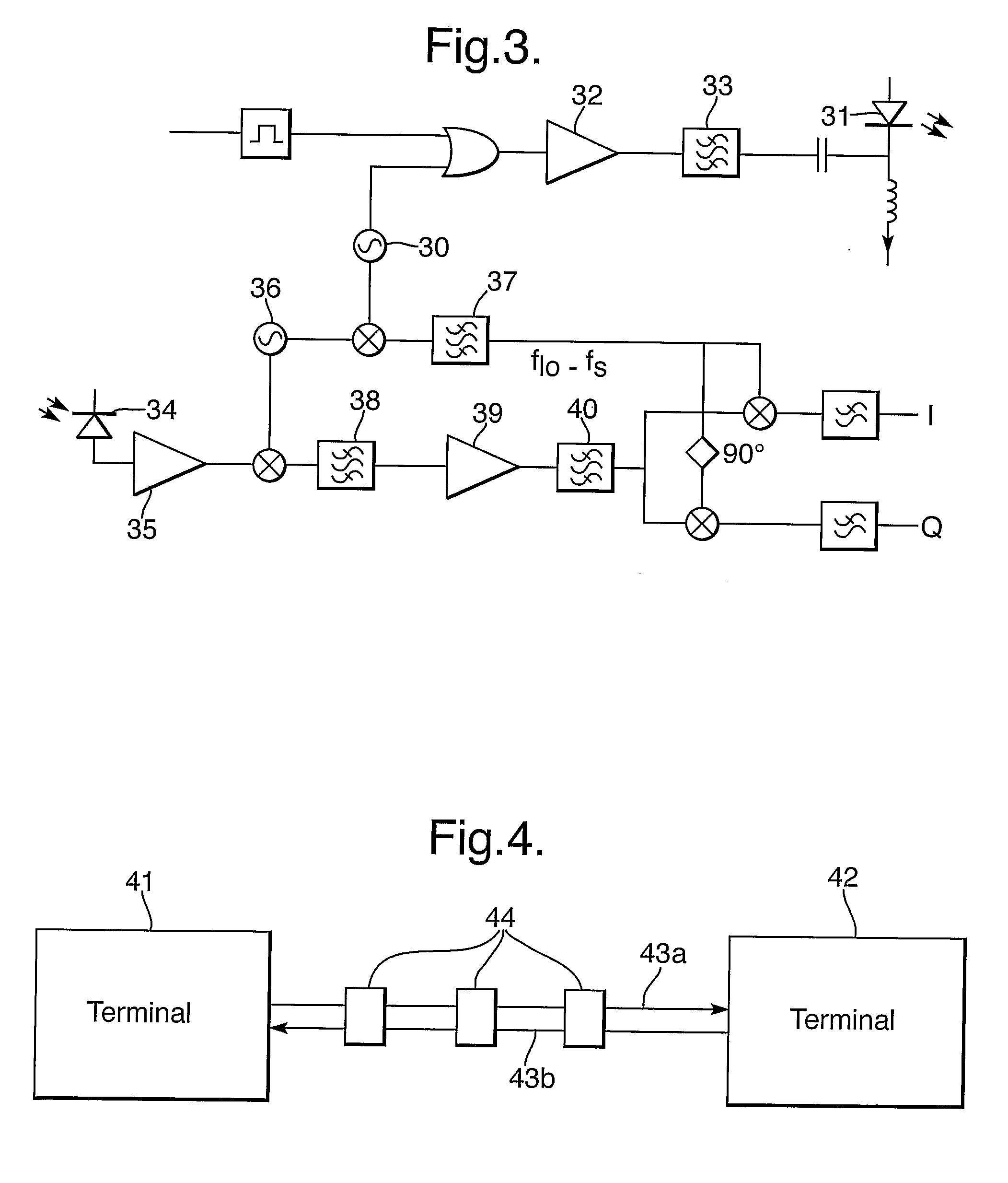Pulsed high loss loop back signalling scheme
a high-loss loop and signalling technology, applied in the field of communication systems, can solve the problems of slow speed at which information on faults in the transmission system can be collated, low signal-to-noise ratio (snr) associated with the return signal, and the inability to eliminate much of the noise generated in the pin diode in the receiver, so as to improve the snr, reduce the interference of counter-propagating traffic, and reduce the cost
- Summary
- Abstract
- Description
- Claims
- Application Information
AI Technical Summary
Benefits of technology
Problems solved by technology
Method used
Image
Examples
Embodiment Construction
[0049]FIG. 1 is a schematic illustration of a section of a repeated optical fibre link. Three repeaters are shown in FIG. 1, but a typical long haul fibre link may include many repeaters at predetermined positions along its length in order to amplify optical signals propagating along the link.
[0050]The transmission system comprises a first optical fibre 10 which carries optical signals from a first terminal to a second terminal, as indicated by the arrows in FIG. 1. The transmission system also includes the second optical fibre 11 which carries optical signals from the second terminal to the first terminal. As optical signals travel along the optical fibres they become attenuated. Accordingly, repeaters 12 are spaced along the fibres 10 and 11 to amplify the attenuated optical signals. This amplification is accomplished by an amplifier 13 in each repeater. Each repeater has an amplifier for the first fibre 10 and an amplifier for the second fibre 11. Any suitable amplifier may be us...
PUM
 Login to View More
Login to View More Abstract
Description
Claims
Application Information
 Login to View More
Login to View More - R&D
- Intellectual Property
- Life Sciences
- Materials
- Tech Scout
- Unparalleled Data Quality
- Higher Quality Content
- 60% Fewer Hallucinations
Browse by: Latest US Patents, China's latest patents, Technical Efficacy Thesaurus, Application Domain, Technology Topic, Popular Technical Reports.
© 2025 PatSnap. All rights reserved.Legal|Privacy policy|Modern Slavery Act Transparency Statement|Sitemap|About US| Contact US: help@patsnap.com



